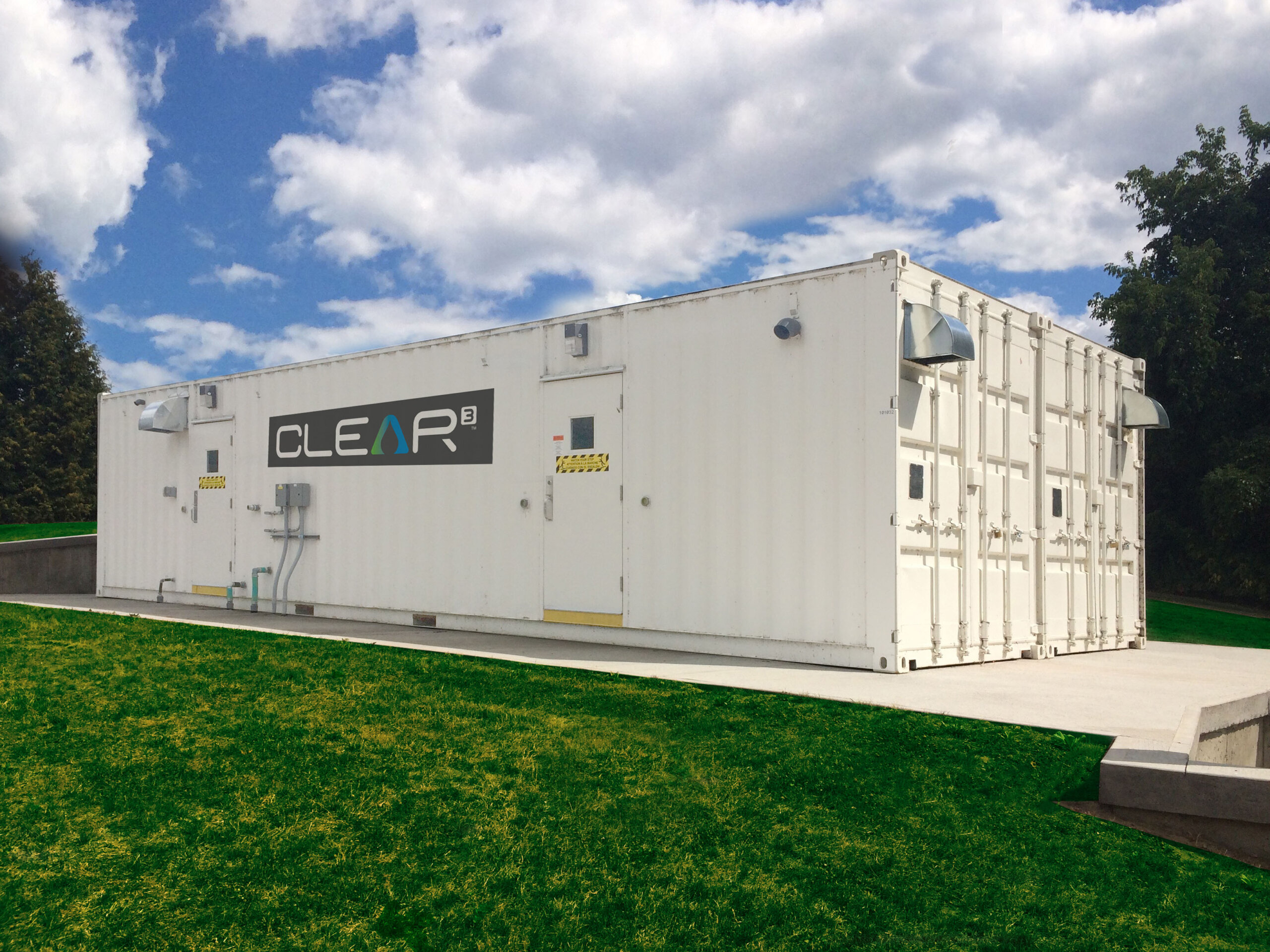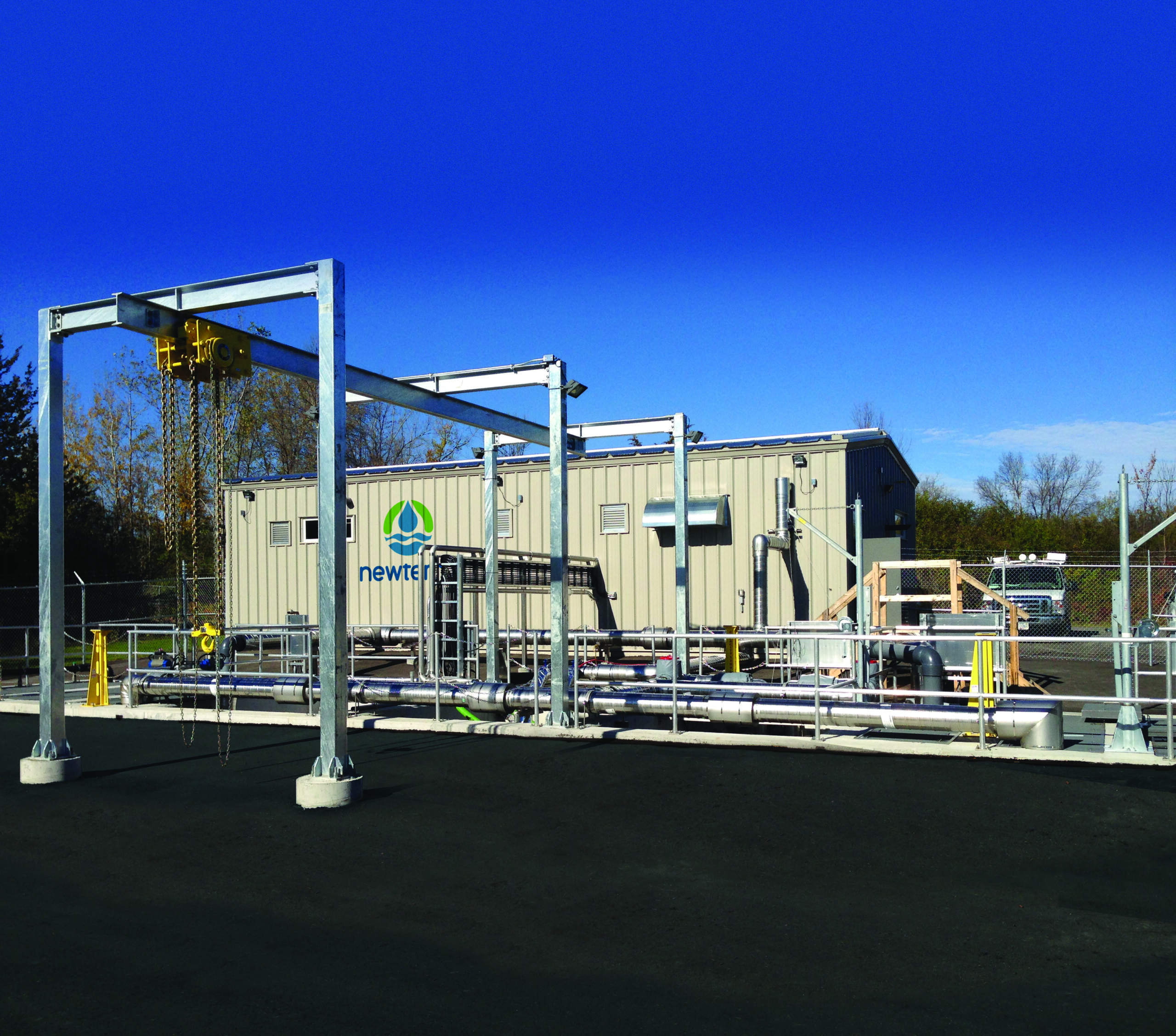Newterra offers pre-engineered and modular Membrane Bioreactor Plants that are equipped to meet your sewage and potable water needs. Our Clear3 MBR systems are scalable and configurable, allowing treatment infrastructure to be added as capacity requirements grow. There is no system in the market that can match Newterra’s Clear3 MBR system for ease of installation.

Membrane Bioreactor Plants
for Wastewater Treatment
-

Clear³ MBR.ST Configurable Membrane Bioreactor Decentralized Systems
Newterra Clear³ MBR.ST Configurable Membrane Bioreactor Decentralized Systems are custom configured for your site with the Clear³ standard treatment modules and either in-ground or above-ground tankage.
-

Clear³ MBR.MF Custom Modular Membrane Bioreactor Facilities
Custom, Scalable, and Prefabricated, Newterra Clear3 MBR.MF Custom Modular Membrane Bioreactor Facilities
-

Clear³ MBR.WWT Modular Membrane Bioreactor Remote Systems
Newterra Clear³ MBR.WWT Modular Membrane Bioreactor Wastewater and Potable Remote Systems are for remote camps and facilities housing from 30 to 8,000 people.
Why Choose a Membrane Bioreactor System?
Still trying to decide if a MBR water treatment system is right for your project? No problem. Membrane bioreactors (MBRs) are an increasingly popular wastewater treatment system that offer a range of advantages over traditional wastewater treatment solutions.
-
High-Efficiency Treatment
MBR plants offer many benefits, including their renowned high-efficiency treatment. This results in excellent treated effluent, surpassing the standards set by environmental regulations.
-
Compact Design
These systems also feature a compact design, making them ideal for locations with space constraints. MBR systems have a smaller footprint compared to conventional systems.
-
Scalability
Another advantage is the scalability of Newterra’s MBR plants. This ensures that they can adapt to changing capacity needs, making them a cost-effective and future-proof solution.
-
Easy Installation
Their easy installation process means these systems reduce setup time and minimize disruption. This is particularly beneficial in areas with limited access or sensitive environments.
The MBR Process: How Does it Work?
The Membrane Bioreactor (MBR) process is a revolutionary wastewater treatment method that combines conventional activated sludge treatment with advanced membrane filtration. The biological process begins with the activated sludge system, where microorganisms break down organic material in the wastewater. This is followed by the membrane filtration stage, where fine-pore membranes filter the treated water, effectively trapping any remaining solids, bacteria, and viruses. The result is high-quality effluent that surpasses the strictest environmental standards. MBR water treatment systems are renowned for their efficiency, compact design, and adaptability, making them a preferred choice for both sewage and potable water treatment.
The Newterra Advantage
Each Newterra Clear3 system of Membrane Bioreactors offers distinct advantages over the competition.
- Our modular solutions are designed to be easy to install and grow with you. Making reliable and cost-effective solutions for wastewater treatment operations that scale with you.
- We offer a variety of customization options that allow customers to tailor their systems to fit their specific needs.
- Our decentralized membrane bioreactor system can treat wastewater in smaller, distributed facilities that are more cost-effective and require less energy than a centralized system.
Conventional Activated Sludge vs Membrane Bioreactor Systems
While both Conventional Activated Sludge (CAS) systems and Membrane Bioreactor (MBR) systems serve the purpose of wastewater treatment, they differ significantly in their processes and efficiencies.
CAS systems, the more traditional method, consist of a series of steps, including biological treatment in an aeration tank and solid-liquid separation in a secondary clarifier. However, these systems can be limited by their larger footprint and often require additional tertiary treatment to meet stringent effluent water quality requirements.
MBR water treatment systems integrate the biological degradation step with membrane filtration in one single process. This innovation significantly increases the system’s efficiency and allows for a more compact design. Further, MBR systems produce a high-quality effluent that is directly suitable for most reuse applications without any additional treatment, thanks to the advanced membrane filtration technology. Newterra Clear3 MBR systems represent a more modern, efficient, and sustainable approach to industrial wastewater treatment
Cost Reduction Compared to Conventional Activated Sludge Systems
Membrane Bioreactor (MBR) systems exhibit cost-effectiveness over Conventional Activated Sludge (CAS) systems in several ways. Firstly, the compact design of MBR systems results in smaller infrastructure needs, directly translating to less capital expenditure in constructing large tanks and facilities required by CAS systems. Secondly, because MBR systems produce high-quality effluent, they eliminate the need for additional tertiary treatment processes often required by CAS systems, saving significant operational costs over time. Thirdly, MBR systems are more energy-efficient than CAS systems, reducing long-term operation and maintenance costs. Lastly, the robustness and adaptability of MBR systems to changing wastewater loads decrease the risk of system failure, thus minimizing potential repair or replacement costs. The cumulative effect of these savings makes MBR systems from Newterra a more cost-effective solution for wastewater treatment.

Let’s Discuss Your Membrane Bioreactor Project Today!
Are you ready to explore the innovative and cost-effective solutions Newterra’s Membrane Bioreactor (MBR) systems can offer for your wastewater treatment needs? Start a conversation with our team now. We’re eager to understand your unique project requirements and show how our tailor-made, scalable, and high-efficiency MBR systems can revolutionize your wastewater treatment process. Contact us today, and let’s transform your project together.

We’re Here to Help
To get your wastewater treatment project going with our advanced membrane bioreactor systems, or for help understanding what comes next, get in touch with a Newterra expert today.


